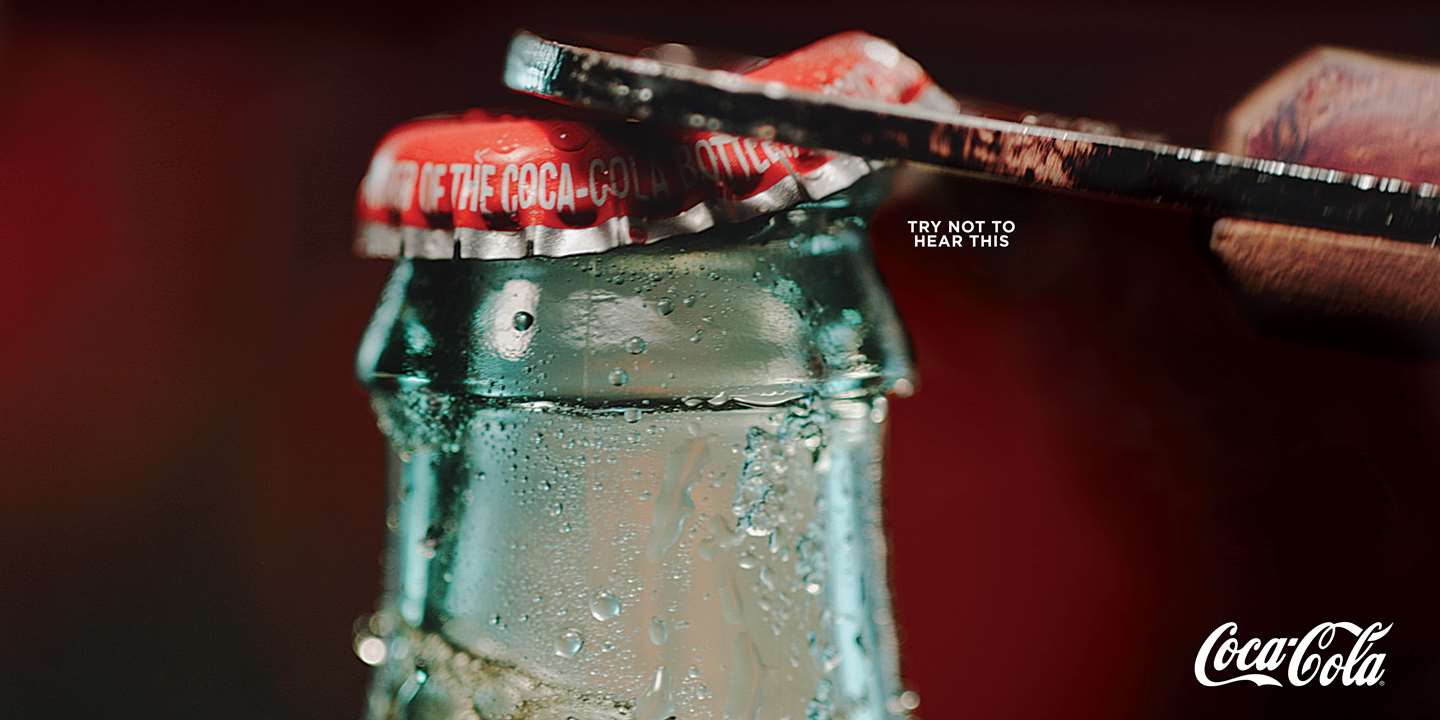The power of print at a glance
- Print can trigger senses and cravings for well-known products
- The essence of print is simplicity – hence its effectiveness
- Beautiful print advertising can generate discussions online and lead to millions of impressions

The power of print at a glance
Ever heard of the word ‘synaesthesia’? It’s a neurological condition that causes the brain to combine sensory experiences unexpectedly. While a regular person listens to music and hears a song, a synesthetic person may listen to music and see a colour or eat a steak and hear a sound.
But what if you’re not a synaesthete? Could you still be affected? Could an ad create a synaesthesia-like effect, if it was done correctly? DAVID The Agency bet on the answer being ‘yes’, and used it as the basis for a stunning print campaign for Coca-Cola, Central & Eastern Europe.
“We all know that one sense can trigger another – smell can trigger a memory; a song can trigger a craving. Coke is such a powerful brand with such a well-known product. We really wanted to have some fun with the creative and come up with something really fresh” said Juan Javier Peña Plaza, executive creative director at DAVID.
“Try not to hear this”
The beautiful, vibrant close-ups show a can or a bottle of Coca Cola being opened or poured, next to the words ‘try not to hear this’. The slogan acted as a trick of reverse psychology.
“It was to make viewers remember a sound that they’ve been told to avoid. This is all about making them feel surprised that a printed image could make them hear and subsequently, crave something.”
Consumers often believe that they are immune to the effects of today’s advertising. Statistics show that many people do actively ignore ads. So DAVID created an ad that forced viewers to stop, look and listen. It’s an iconic product displayed with the iconic rituals we’ve come to associate with it: the uncapping of a bottle, the pulling of a ring pull, and the frothing of the bubbles.
“You can’t help it. You see the ad; you hear the sound. And hearing that ‘kttccchhhh’ makes you instinctively want to taste what’s inside. And it works! You think ‘oh my God I hear it, oh my God I taste it, oh my God, now I want a Coke.’”

The power of a single photograph
These colourful, dynamic photographs are examples of what Oxford University researcher Professor Charles Spence calls the importance of ‘protein in motion’ – the theory that food is most eye-catching and appealing when it’s captured in motion, because it conveys freshness.
Spence believes that static images can be just as appealing as videos, as long as this dynamism is applied. Photography showing rolling condensation on an icy bottle, and the spray of zest jumping out of the opening can, perfectly capture this phenomenon.
“We’ve all seen Coca-Cola ads our whole lives, haven’t we? We all know what Coke looks like, what it smells like, what it tastes like. We’ve all experienced it as a refreshment. There are very few brands that could pull off a campaign like this, because we’ve had hundreds of years of sensorial advertising through the refreshing rituals of drinking a Coke. This was pretty key to our success, and pretty key to why it got so much attention” explains Juan.
Remarkably resilient
And the attention was definitely impressive. ‘Try Not To Hear This’ generated a massive 86 million impressions and dozens of online conversations. The fact that a single print ad could generate this much online activity is testament to its lasting power as an advertising medium, and its effectiveness alongside the reach and chatter of digital.
It also worked because the idea was so fresh and brave. In a digital world, the creative team opted for an analogue media to trigger the senses. “But we liked the idea that a single photograph and a line of copy could be powerful enough to do that. And while digital is a wonderful medium, there’s something about print that’s purer. It’s a lot harder to obfuscate.”
“We wanted to show that print can be anything. This Coca-Cola ad is a print ad, yes. But it turns your head into a radio – it allows you to hear sounds from an image, mixing two different worlds and bringing them together.”
Juan concludes, “The campaign has only been live for two months, but the client is already looking to take it from the four European markets it launched in, to a global market.”